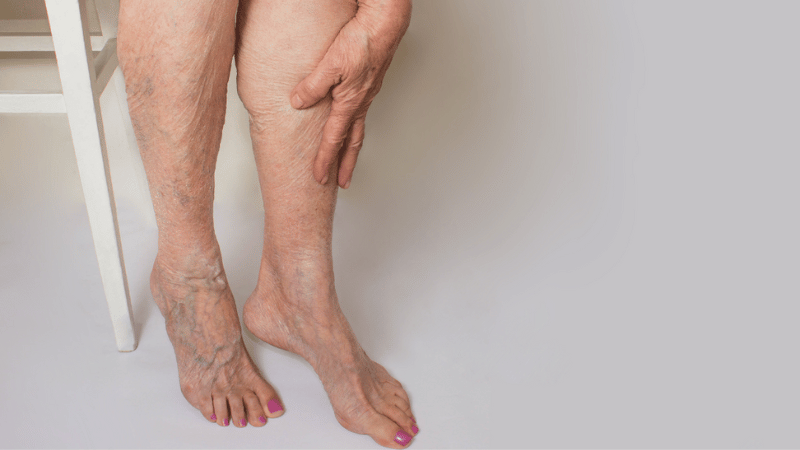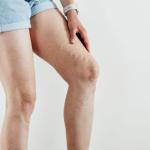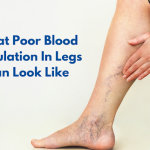
You’ve surely had a night or two (or more) where you just could not stop tossing and turning.
And it probably seemed the ability to find a comfortable sleeping position was just the most impossible thing you’ve ever attempted. That inability to get comfortable leads to frustration, which furthered your inability to sleep, which as you know, started a vicious chain reaction of the effects that little to no sleep has on your body.
If this is something you struggle with regularly, there may be more to it than just discomfort. You may be suffering from restless legs syndrome.
According to Science Daily, 80% of RLS sufferers claim their legs are “jerking or twitching uncontrollably” with this disease, and most often at night. So, if you fall into the unlucky 7-10% of the U.S. population that suffers from restless legs syndrome, then chances are good you’re looking for some ways to care for your legs to keep that restlessness and pain to a minimum.
We are here to give you a run-down on what restless legs syndrome is, and some signs to look out for if you think your leg discomfort may be more than typical.
What is Restless Legs Syndrome?
According to the Mayo Clinic, restless legs syndrome (RLS) is “a condition in which you have an uncontrollable urge to move your legs, usually due to leg discomfort.”
This problem can occur at any time of day, but it is usually experienced at its maximum at night when you’re sitting or lying down for long periods of time.
Though it seems as if this is an issue that would only affect older people, the truth is that RLS does not discriminate in terms of age — anyone at any age can be affected by it.
However, the syndrome does tend to get worse as you get older.
Signs that You Have Restless Legs Syndrome
RLS affects a somewhat small part of the population: the National Institute of Neurological Disorders and Stroke estimates that 7-10 percent of people in the United States suffer from restless legs syndrome. NINDS also found that RLS is more likely to occur in women than it is in men.
So what signs point the way to a restless legs syndrome diagnosis?
Here are things you should be on the lookout for if you’re wondering whether RLS is what you’re dealing with.
You are unable to fight the urge to move your legs
Many of us don’t like sitting still for long periods of time. We all get restless. However, the level of restlessness for people suffering from RLS is magnified by many-fold. For people with RLS, it is nearly impossible for them to not move their legs.
In addition, that urge to move their legs is coupled with uncomfortable feelings including:
- Itchiness
- Creeping
- Pulling
- Tugging
This unfightable urge to move your legs is the number one symptom of restless leg syndrome, so if you aren’t experiencing these feelings, then chances are good you’re not suffering from RLS.
The pain and discomfort lessen when you are moving
If you read #1 above, and it all sounds familiar to you, then let’s see if this second sign is something you experience as well. Do the uncomfortable feelings discussed above (including itchiness and creeping) go away once you start moving your legs? If you answered “yes,” then you are still on the path that points towards restless leg syndrome.
The relief of pain that occurs when you move may be immediate, or more gradual, but either way, that alleviation of pain that goes along with movement is another sign that you’re dealing with RLS.
The pain and discomfort worsen when you are not moving
For those suffering from restless leg syndrome, the symptoms get worse when you are at rest. That can occur when you are laying in bed, or if you’re sitting for long periods of time. Desk jobs and travel are two things that can make restless leg syndrome really act up.
So, if you find that your pain gets worse when you’re at rest for a while, you can check off another sign that you are suffering from RLS.
The symptoms you’re dealing with make sleeping a challenge
Because RLS is worse in the evenings, trying to sleep when you’re suffering from restless leg syndrome can be one of the most frustrating things you’ve ever experienced. Even if you are finally able to stop moving your legs and go to sleep, you may be woken up (or may wake your partner up) by periodic limb movements (PLMS).
What are periodic limb movements?
These are leg movements that happen every 20-30 seconds throughout the night that, as you can guess, make it very difficult to sleep. If you’re a heavy sleeper, thank your lucky stars. You may be able to deal with PLMS without it waking you up too often. However, if you’re a light sleeper, or have a partner you share a bed with, chances are sleep is not a relaxing and revitalizing thing for you.
Because PLMS happens periodically throughout the night, you could be woken up (or wake your partner up) every few minutes.
This sounds pretty terrible, doesn’t it?
If you suffer from the above symptoms, it is highly likely that you have restless legs syndrome.
According to the NINDS, there is no other medical or behavioral condition that the above symptoms, when experienced all together, could possibly be a sign of.
4 Tips on How to Treat Restless Legs Syndrome
1. Upping your iron
Though not always the case, sometimes the pain associated with restless legs syndrome can be a result of low levels of iron in your system. By adding iron supplements to your vitamin regimen, or getting your iron intravenously, you may see some of your symptoms alleviate.
2. Exercising
Though it may seem counterintuitive to work out when your legs are bothering you, RLS is a health issue where exercising will actually benefit you. According to a study done with 28 participants over a 12-week trial period, exercising three days a week “had a significant improvement in symptoms” for restless legs syndrome.
Additionally, exercising can help improve sleep, which, when suffering from restless legs syndrome, can be a major help. As mentioned above, sleep can be a difficult task when dealing with the symptoms of RLS.
However, there is a fine line between the right amount of exercise and too much exercise when you’ve got RLS. Don’t push yourself too hard, or else you may find your legs hurting even more.
3. Yoga
Yoga is recognized as a great form of movement to help with flexibility, stress, anxiety, balance, stretching, and now, restless legs syndrome. A study done showed that participants who practiced yoga on a regular basis for 8 weeks found that some of the symptoms associated with RLS were alleviated. These symptoms include poor sleep, stress, high blood pressure, and more.
4. Vein Surgery
The vein specialists at USA Vein Clinics are here to help. With the top vein doctors in the country, vein treatments such as endovenous laser ablation treatment will help your vein problems no longer be a problem.
Our outpatient treatments will have you back on your feet in no time, and let you enjoy your life rather than suffering from leg problems that drag you down.



